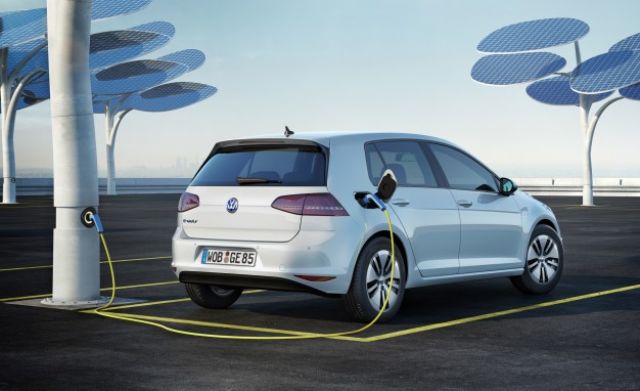Norway's EV/PHEV Share of EV Market Leads: IHS Automotive
2015/07/22 | By Quincy LiangAmong major industrially advanced nations where consumers tend to pay more attention to environmental-protection issues, Norway continues to lead the global electric vehicle/plug-in hybrid vehicle (EV/PHEV) market, according to recent analysis by IHS Automotive, a global provider of critical information.
In the first quarter of 2015, Norway ranked first on the new IHS Automotive Plug-in Electric Vehicle Index, which ranks the market share of EV and PHEV registrations in a given quarter for eight countries, including Norway, Netherlands, the U.K., the U.S., France, Germany, Japan and China.
With EV/PHEVs representing one-third of new vehicles registered in Norway during the first quarter of this year, the country leads the first-quarter rankings with just over 8,000 units, and achieved a 41 percent increase in volume over the same period in 2014. No import taxes on EVs, among other incentives, have made these vehicles a viable alternative to internal combustion engine (ICE) vehicles in Norway. The Volkswagen e-Golf is the dominant model among local consumers during the first quarter, according to the analysis.

The Netherlands experienced the second-highest growth in EV share in the first quarter, with more than 5,700 units registered, representing 5.7 percent of the market during the quarter.
Volumes Remain Highest in U.S., China
The U.S. and China led all countries based on volumes of new EV/PHEVs registered during the quarter, with nearly 15,000 registrations in the U.S. and nearly 13,000 registrations in China.
“While the federal tax credit in the U.S. of up to US$7,500 for plug-in electric vehicles is continuing to encourage sales across the country, the adoption of these vehicles has been uneven, as consumer consideration and choice has skewed in favor of states offering additional incentives, like the Clean Vehicle Rebate Project in California or Georgia’s Zero Emission Vehicle Tax Credit,” said Ben Scott, senior analyst at IHS Automotive. “In addition, low fuel pump prices are adversely influencing EV/PHEV purchases among U.S. consumers.” Another recent report says that some Americans, encouraged by lower gasoline prices, are opting to buy larger, less gas efficient vehicles as SUVs again.
The market share for EV/PHEVs in the U.S. remains low, with these vehicles accounting for just 0.8 percent of the market during the quarter, according to IHS. Based on volume, the most popular EV/PHEV in the U.S. is the Tesla Model S.
In China, government incentives help to support EV and PHEV ownership. Between the first quarter last year and the same timeframe this year, the number of EV/PHEV registrations in China rose by nearly 750 percent. However, these vehicles continue to represent a minimal percentage of the overall market in China – just 0.3 percent, indicating that further incentives may need to be considered to increase consumer acceptance. The most popular plug-in vehicle (PEV) in the first quarter, 2015 in China is the BYD Qin PHEV. The U.K. also had impressive growth of 392 percent for plug-in vehicles between the first quarter, 2014 and the first quarter, 2015.
Other countries do not offer the same advantages for consumers. As an example, Germany does not offer many appealing incentives for consumers to consider EV/PHEVs a compelling alternative to internal combustion vehicles. Although plug-in vehicle registrations in Germany increased by 98 percent between the first quarter of 2014 and first quarter of 2015, the increase comes from a low base.
Many of the plug-in vehicles registered in Germany during the timeframe were electrified variants on traditional ICE models. Popular vehicles include the Volkswagen Golf GTE PHEV and Audi A3 PHEV. Germany is considering further incentives on plug-in electric vehicles to support future adoption. Interestingly, France had similar growth to Germany over the same period, yet offers more incentives on plug-in electric vehicles. This is an example of incentives not having the desired effect to catalyze the uptake of these types of vehicle, IHS Automotive said.
Japan is the only country to have a negative year-over-year percentage change, the research unit said. This is likely due to some EV incentives ending between this period and Japanese consumer preference towards HEVs (hybrid electric vehicles without a plug) over PHEVs.
| IHS Automotive Plug-in Vehicle Index | |||||
| Country | New EV/PHEVs Registered Q1 2015 | Share of Total Registrations | New EV/PHEVs Registered Q1 2014 | Share of Total Registrations | YoY % Change |
| Norway | 8,112
| 33.1%
| 5,775
| 15.8%
| 40.5%
|
| Netherlands | 5,760
| 5.7%
| 3,306
| 3.1%
| 74.2%
|
| United Kingdom | 8,684
| 1.2%
| 1,764
| 0.3%
| 392.3%
|
| USA | 14,832
| 0.8%
| 14,799
| 0.8%
| 0.2%
|
| France | 3,626
| 0.8%
| 1,801
| 0.4%
| 101.3%
|
| Germany | 4,520
| 0.6%
| 2,286
| 0.3%
| 97.7%
|
| Japan | 7,750
| 0.6%
| 9,626
| 0.6%
| -19.5%
|
| China | 12,555
| 0.3%
| 1,486
| <0.1%
| 744.9%
|
| Source: IHS Automotive | |||||

